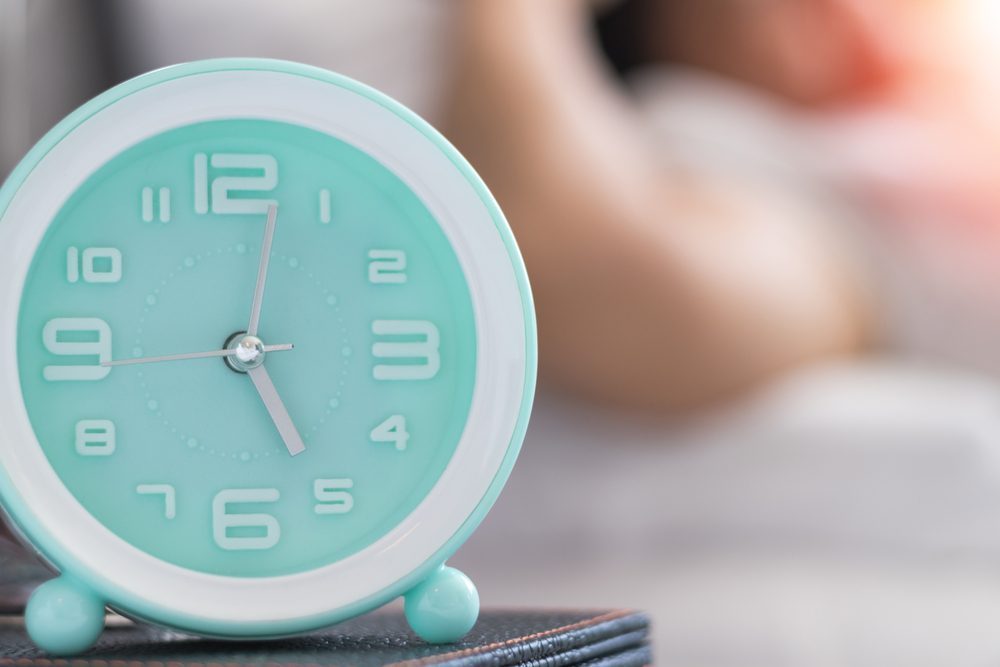What a ‘Typical’ Day Is Like for My Son, Alfie, and Me

BEEP BEEP BEEP BEEP. My eyes spring open. It’s still dark. It’s not my alarm that I hear. “Wake up!” I say as I roll over and poke my husband. It’s time for him to go to work.
This is how most of my mornings start, except after a rough night when I have already gotten up or retreated to the spare room with my son, Alfie.
It’s hard to explain what a typical day is like for Alfie and me, because there are so many variables, but I’m going to do my best.
I try to shut my eyes again for an hour or two after my husband has gone to work. Whether I am successful or not usually depends on how much my brain is ticking.
I stay in bed until I am woken by the sound of Alfie singing through the baby monitor. He’s a morning person. I’m still learning to be one. He wakes up so happy that it’s contagious.
I go and pick him up from his bed. He normally has something interesting to tell me, whether that be “quack quack,” “honk honk,” or “1, 2, 3, GO!”
So, off we go into the living room where I lay Alfie on his tummy on the couch. As a baby, Alfie would scream the house down if I laid him on his tummy. His inability to “do” tummy time was one of the first signs that he had a neuromuscular condition. These days, he tolerates it.
He’s never had the strength to do much while lying on his tummy, but it is a good stretch for his hips, where he is starting to form contractures. I use this time to set up his feeding pump and morning vitamins. While Alfie can eat and drink orally, he fatigues quickly, so he gets the majority of his nutrition through his percutaneous endoscopic gastrostomy.
Once Alfie’s feed is connected, I dress him for the day and put on his seam-free socks (to prevent any pressure sores), his ankle-foot orthoses, and his shoes so that he is ready for time in his standing frame. Alfie spends about 45-120 minutes in his stander every day.
Standing upright is important for Alfie’s cardiovascular system, digestion, and respiration. When standing, his skeleton is exposed to strain that is important for maintaining strength in his bones. Also, his knees and hips, which are mainly bent when Alfie is in a wheelchair or sitting, are stretched out.
We try to fit as much fun and play into our days as we can, but after Alfie is finished in his stander, we often have appointments to attend. These may include physiotherapy, occupational therapy, speech therapy, dietetics, and equipment trials.
While this isn’t the life or the parenting journey I once expected, it’s become our norm, and now it’s hard to imagine a life without feeding tubes, standing frames, and therapy. All of the things that were once so daunting and scary are now second nature.
The hardest part is fitting it all in and finding a balance. Am I doing enough stretching to slow contractures? Am I doing enough play to still enjoy being Mum? Are we going out and socializing and having enough adventures? Am I keeping Alfie safe from illnesses and germs?
I’m grateful that Alfie is such an easygoing and happy kid. I worry endlessly about the moment when Alfie notices how vastly different his life is from others his age and realizes that his friends don’t spend their days doing all of the things that are so important for him to do. While our day-to-day life takes a big physical toll on me (some days it feels as though Alfie is getting heavier by the second), the mental toll is the greatest.
Alfie has taught our family many things. When your life changes in an instant, you quickly realize what’s important, and it’s definitely not clothes or cars, possessions or labels. All of the therapies, pieces of equipment, stretches, and exercises are incredibly important, but the most important thing is Alfie’s happiness.
So, the best days of all, our favorite days, are the days when we leave the AFOs off, the standing frame stays in the study, the calendar is empty, and we spend the day cuddling, singing, watching his favorite TV show, “Bluey,” and giggling on the swing.
***
Note: Muscular Dystrophy News is strictly a news and information website about the disease. It does not provide medical advice, diagnosis or treatment. This content is not intended to be a substitute for professional medical advice, diagnosis, or treatment. Always seek the advice of your physician or another qualified health provider with any questions you may have regarding a medical condition. Never disregard professional medical advice or delay in seeking it because of something you have read on this website. The opinions expressed in this column are not those of Muscular Dystrophy News or its parent company, Bionews, and are intended to spark discussion about issues pertaining to muscular dystrophy.







Nick Ormiston
Thank you so much for sharing this. My son is turning 5 and had Duchenne. Our days are also filled with appointments, stretching, and energy conservation. It is not the life or childhood we envisioned, but we have also focused on how to make it as fun as possible. You captured this so well. It feels good to hear from someone living a similar life. We also love Bluey.